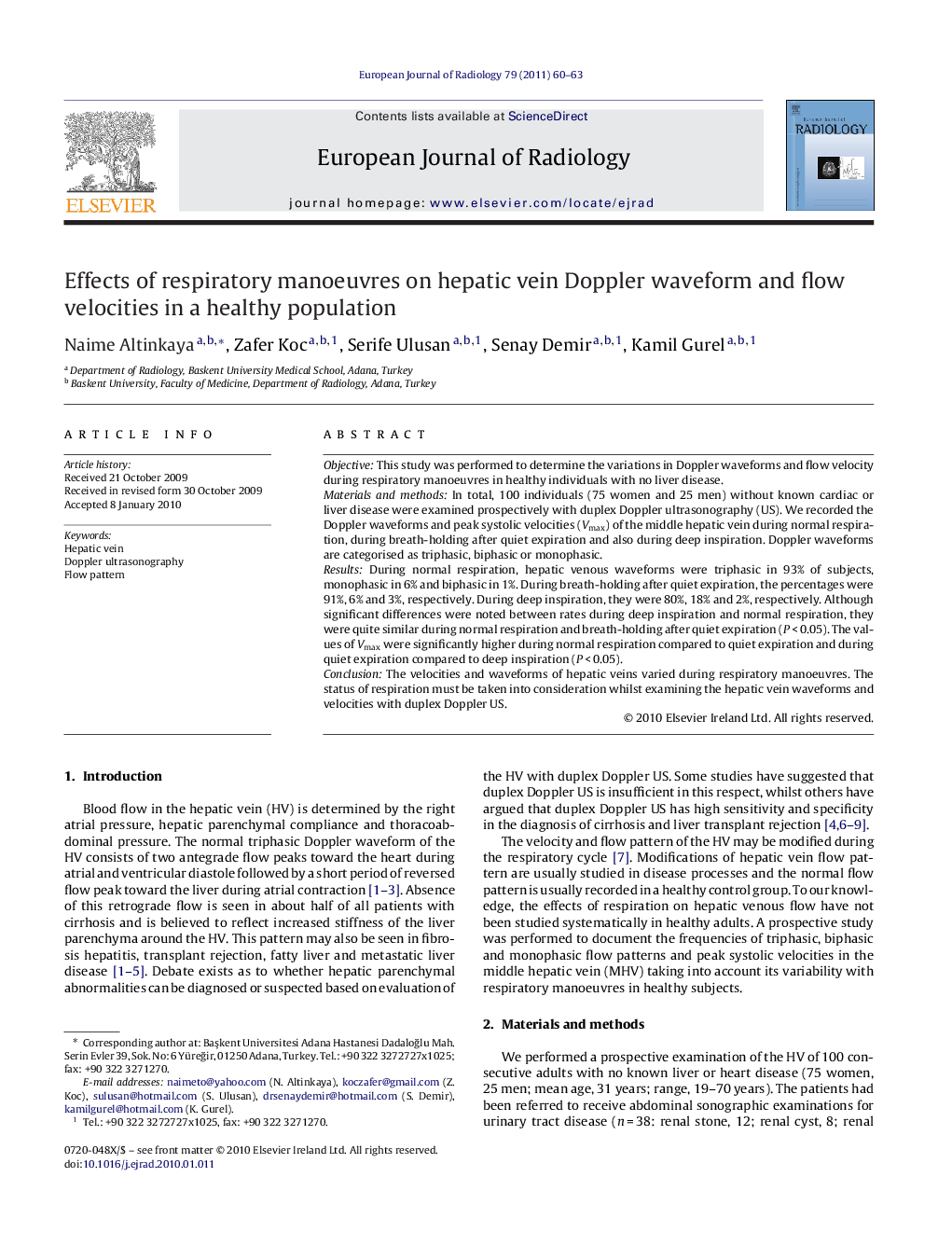| Article ID | Journal | Published Year | Pages | File Type |
|---|---|---|---|---|
| 4226924 | European Journal of Radiology | 2011 | 4 Pages |
ObjectiveThis study was performed to determine the variations in Doppler waveforms and flow velocity during respiratory manoeuvres in healthy individuals with no liver disease.Materials and methodsIn total, 100 individuals (75 women and 25 men) without known cardiac or liver disease were examined prospectively with duplex Doppler ultrasonography (US). We recorded the Doppler waveforms and peak systolic velocities (Vmax) of the middle hepatic vein during normal respiration, during breath-holding after quiet expiration and also during deep inspiration. Doppler waveforms are categorised as triphasic, biphasic or monophasic.ResultsDuring normal respiration, hepatic venous waveforms were triphasic in 93% of subjects, monophasic in 6% and biphasic in 1%. During breath-holding after quiet expiration, the percentages were 91%, 6% and 3%, respectively. During deep inspiration, they were 80%, 18% and 2%, respectively. Although significant differences were noted between rates during deep inspiration and normal respiration, they were quite similar during normal respiration and breath-holding after quiet expiration (P < 0.05). The values of Vmax were significantly higher during normal respiration compared to quiet expiration and during quiet expiration compared to deep inspiration (P < 0.05).ConclusionThe velocities and waveforms of hepatic veins varied during respiratory manoeuvres. The status of respiration must be taken into consideration whilst examining the hepatic vein waveforms and velocities with duplex Doppler US.
